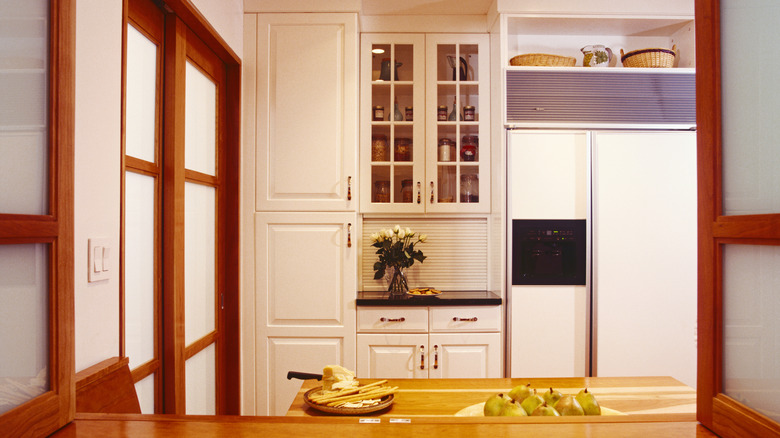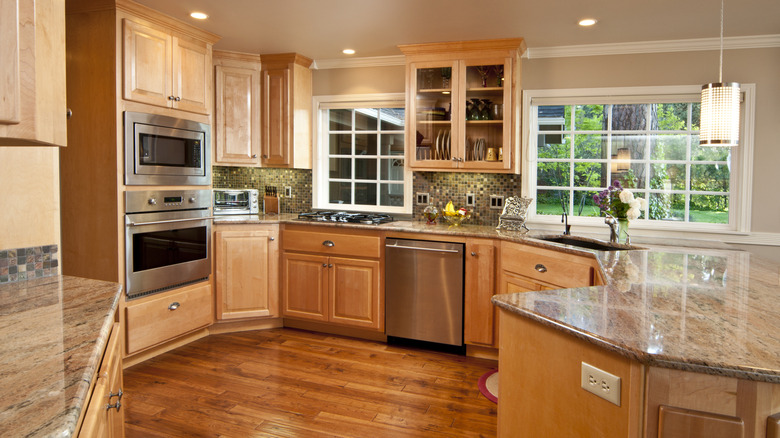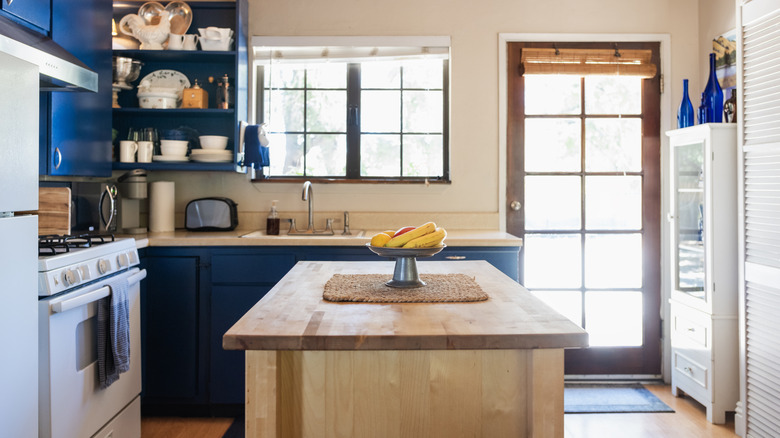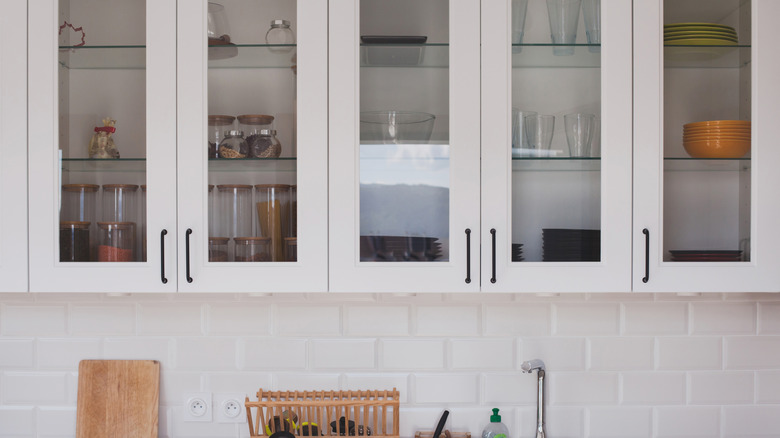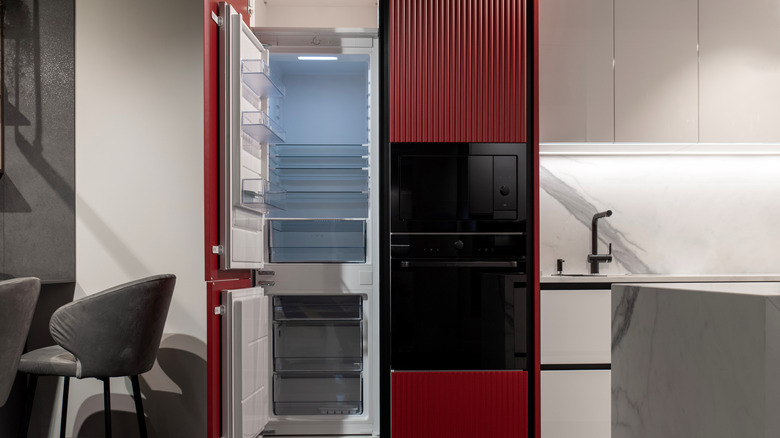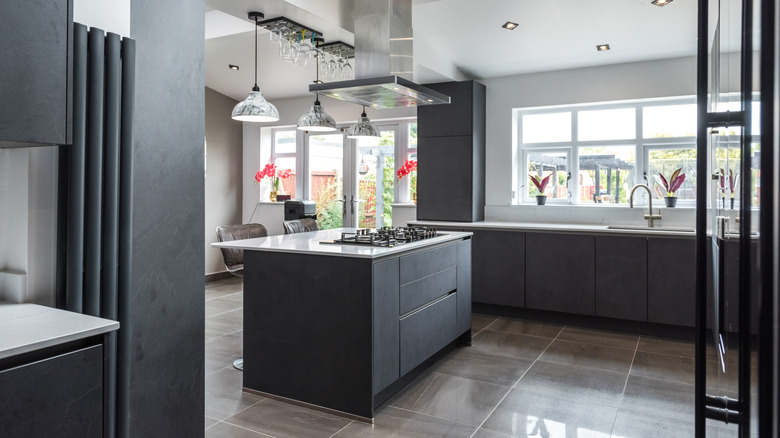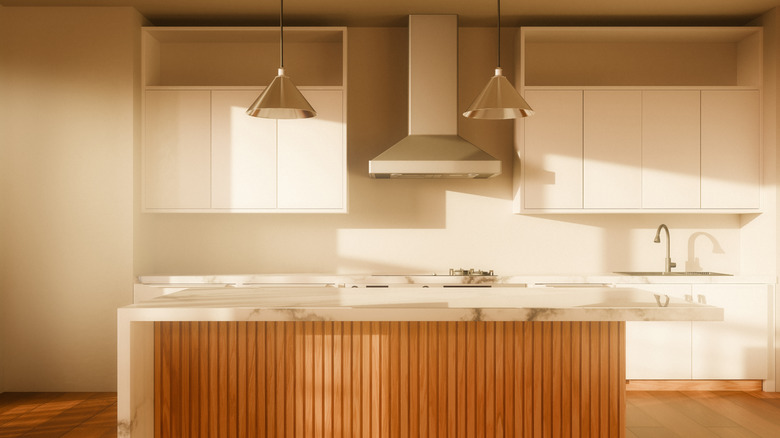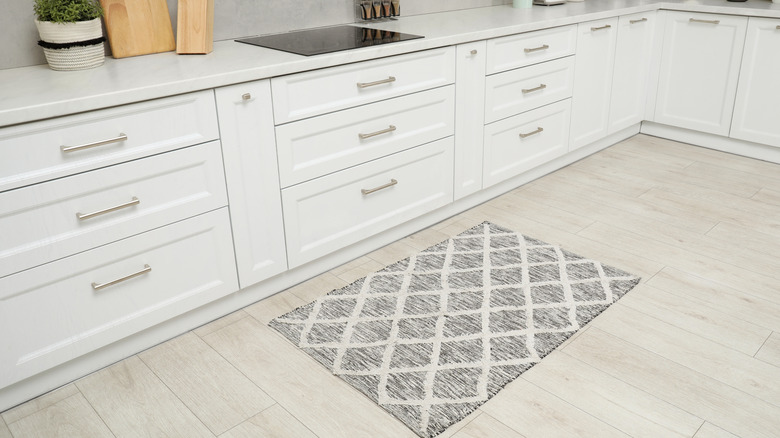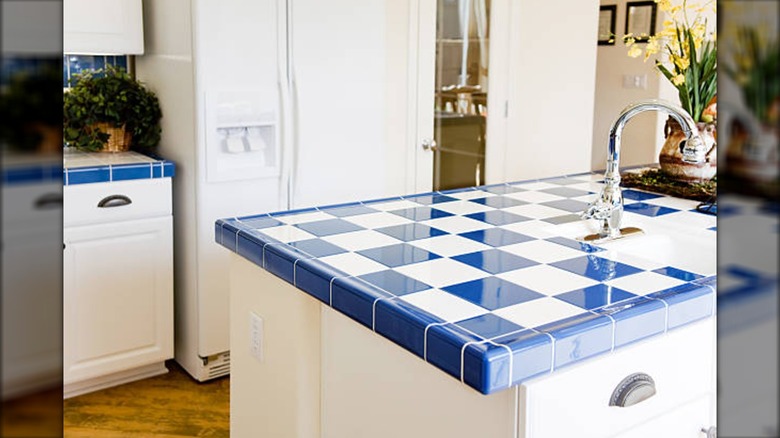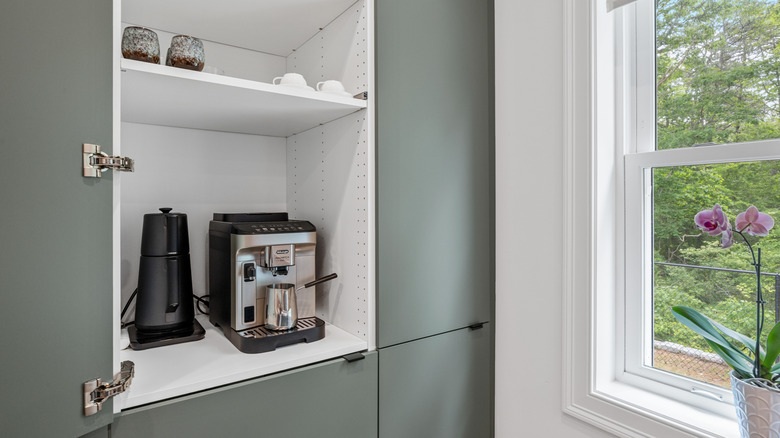9 Kitchen Trends From The '90s That Are Making A Comeback
If you know anything about interior design, then you know that trends fall out of fashion only to regain their popularity years or even decades later. Such is the case for several kitchen trends that you might have thought vanished in or after the 1990s. They're considered chic and stylish once more.
Wood is in again, from honeyed brown cabinets to butcher block countertops. You can also break up the wooden monotony (as folks did in the '90s) with glass door cabinets and tile counters, two other trends of the era that are making a comeback. Even the decade's warm, beige-y color palette is returning, especially through painted cabinetry.
Tiled floors and patterned fabrics are both great ways to add '90s-inspired pops of personality to the kitchen, and they offer many ways to stylistically play off of cabinetry and countertops. You might also enjoy more counter space with this design era thanks to the popular re-adoption of appliance garages, or spaces in your kitchen where you can tuck away small devices. Larger units are also hidden thanks to the return of built-in appliances, contributing to an overall sleek look.
1. Wooden cabinets
If you were alive in the 1990s, then you probably still remember the massive brown wood cabinets that were popular in kitchens of that era. And while they're coming back around to popularity, modern takes on wood cabinets may feature simpler, more squared-off designs than the raised panel doors of the '90s. Additionally, for a lighter and less monolithic look, these cabinets often don't reach to the ceilings like they did in the past.
2. Wooden countertops
In addition to being used for cabinetry, wood was also a popular material for '90s countertops, and this application is once again in vogue. While you may think that wood is more susceptible to damage than stone, this isn't typically a big deal for home kitchens. Wood also has a versatility that stone does not.
For instance, if a wooden countertop gets dented or scratched, you can call it "added character." If you crack a marble countertop, however, you'll have to get it repaired or even replaced. Coupled with the warmth and homey-ness wood countertops provide, it's easy to see why these are popular again.
3. Glass door cabinets
Glass door cabinets attained popularity in the '90s by pulling double duty. They broke up the monolithic look of the era's massive wood cabinets, and they essentially functioned as display cases for visually attractive plates, cups, pans, and more. And just as wooden cabinets are making a comeback, so too are glass door cabinets, for much the same reason they were adopted decades ago.
4. Built-in appliances
In the 1990s, you knew you were in a modern kitchen when the microwave wasn't a countertop box but was instead mounted above the stove, or even built into the cabinets themselves. These are still popular, but the trend has expanded to concealing even large appliances behind faux cabinetry.
It's a great way to keep design tidy and — in the case of appliances like built-in ovens — maximize cabinet storage space. But not all appliances should be build-ins. Some kitchen upgrades are just not worth the money, like an expensive built-in coffee maker that will someday be a major repair headache.
5. Tile floors
Tile flooring was a popular kitchen choice for decades. In the '90s, these floors were well-liked for the way they added personality and patterns to more uniform rooms (in addition to being easy to clean.) This is still a popular use case for tile, as modern styling can still prefer homogenous design in much of the rest of the kitchen. But understated tile floors are also a sleek, sophisticated way to tie everything together. It just depends on your personality.
6. Warm colors
Wood finishes are popular again in part because of the warmth they project, but you don't necessarily need wood cabinets and counters to achieve this effect. Painting your existing cabinetry in warm, '90s-inspired colors — think lighter shades of brown, yellow, and yes, even beige — can deliver a similarly homey comfort, and with a bit more color variation than most woods.
7. Patterned fabrics
In general, patterns are a timeless way to add personality to a room. Bold patterns might be one of our favorite vintage kitchen design trends, but for the '90s version of this design resurgence, think a little more mellow.
Patterned textiles were everywhere in '90s kitchens, using classic striped or gingham patterns to add some visual and textural variation to the room. These timeless accents also work great in any modern kitchen.
8. Porcelain tile countertops
Like other '90s trends making a comeback, tiled countertops have slightly changed with the times while still maintaining a certain retro appeal. Today's tile countertops thankfully emphasize ease of cleaning, from each tile's large format and improved porcelain quality to the minimal grout used to hold them in place.
Quartz is still the best stone for kitchen countertops due to its durability and stain resistance. But thanks to engineering improvements, modern porcelain can pull its own weight in this department, and tiles can create a more fun countertop than standard quartz.
9. Appliance garages
There are plenty of great countertop appliances for your kitchen out there, like coffee machines, air fryers, microwaves, blenders, juicers, and many more. But kitchens can also be woefully short on counter space, and even more so when these large electronics take up a large percentage of the area. Enter the appliance garage, a vintage kitchen trend so unobtrusive you may not have even noticed it before.
Appliance garages are like dedicated cubbies with their own doors, intended for housing small- to medium-sized kitchen appliances in a place that's easy to close up when not in use. This can prevent items inside from becoming dusty, plus it creates a sleeker kitchen appearance and preserves counter space for more regular use.
